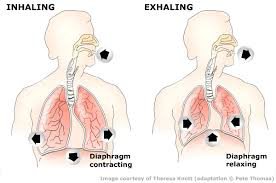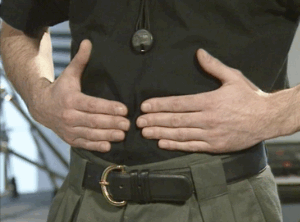
We have introduced five methods to practice vital capacity in the previous article in detail. I believe you have gained knowledge and mastered the relevant content from the article we shared. However, having sufficient and powerful breath is only a condition of playing saxophone, which does not mean that full and abundant breath can assure us not having breath problems when playing saxophone. At the same time, our vital capacity and breath skills are also the basis for the performance of saxophone, and also the key premise for us.
5 Tips for Beginner Saxophonist to Increase Lung Capacity:https://www.sixmonthsrebellion.com/blog/posts/5-tips-for-beginner-saxophonist-to-increase-lung-capacity

We need to know that if we can reasonably control the breath when playing, we can guarantee the timbre of saxophone and improve the integrity of the music. On the contrary, if we do not control our breath well, we may have poor timbre and suffocation. Therefore, we must learn to control our own breath and learn certain breath skills to adapt to different music and skills to improve our performance ability if we want to obtain better performance effect and state when playing saxophone.
Many students believe that we can breathe in and out normally, which is saxophone's breathing method. But in fact, when we play saxophone, especially when playing some skills, if we want to get a better playing effect, we usually choose different breath skills.
1. Thoracic abdominal combined breathing method
The chest abdomen breathing method is the most commonly used and the most common breathing method when we play saxophone, which is widely used in the performance of saxophone. In fact, in addition to saxophone playing, vocal music and other wind instruments are also using this breathing method, which is also the most recognized breathing method in the scientific circles.

Thoracoabdominal breathing method needs to control our breath together with the diaphragm, chest and abdominal muscles. When inhaling, the diaphragm moves downward to reduce the pressure in the chest cavity, making the pressure less than the atmospheric pressure. At this time, the chest relaxes, and the surrounding area below the xiphoid expands. When the diaphragm naturally moves downward, the breath will be sucked into the body by negative pressure.
When we exhale, our chest expands and straightens forward. The lower abdomen naturally contracts upward, causing the diaphragm to move upward. When the pressure is heavy, the breath is squeezed out of the lungs. This process is called thoracoabdominal breathing.
We should also pay attention to the playing posture. We should not hunch our shoulders, arch our stomachs, lean forward in the center of our body, and naturally breathe out or inhale the breath.
Correct Breathing For Saxophone – The Ultimate Guide:https://youtu.be/pqXdBXUb4cg
2. Circulatory respiration
No matter how we practice, one's vital capacity is always limited. Using the method of circular breathing can ensure that the music played will not be disconnected, and the integrity of the music can be achieved no matter how long it is played.
The circulatory breathing method has changed our usual breathing method. We need to breathe in with our nose while exhaling, and then we need to breathe out the new breath and the breath already in our mouth at the same time. When we exchange breath, we need to breathe in or out through our nostrils, and then breathe out through our mouth. When we breathe out, we can use our cheeks to help us.
When we breathe circularly, each inhalation by our nose can be roughly divided into three stages:
1. Replenish breath storage in the mouth
2. Meet physiological gas exchange needs
3. Reduce the broken mark caused by the air flow connection between the chest cavity and the mouth (exhaust breath at the same time)
How to Do Circular Breathing | Saxophone Lessons :https://youtu.be/vAmXrDW6UWs
Thoracoabdominal breathing and circulatory breathing method are two mainstream breathing methods at present. We should fully master the former breathing method before learning the latter method. Of course, there are many breathing techniques for playing saxophone, such as chest breathing, abdominal breathing, and breathing. However, from the perspective of contemporary scientific research results, the chest abdomen combined breathing method is the most scientific method and the most suitable for beginners to learn.
Many students also think that they do not have enough time to do breathing exercises or that breathing exercises are very boring. If you also have these two problems, please refer to the following exercise methods to practice, which may change your view on breathing exercises.
1. Practice before bed
When we breathe while lying in bed, place our hands above our stomach to feel the changes brought about by breathing. We should try to keep the hands on our belly jacked up when we exhale.
2. Exercises during study or work breaks
First of all, we need to find a chair with a back. While inhaling, the stomach needs to be pushed outward. When exhaling, we need to slowly exhale and try to keep the abdomen outward. Note: During practice, our waist and back should be close to the back of the chair.
3. Balloon blowing game practice
When blowing balloons, try to keep your belly facing outward when you breathe in and out. After blowing the balloon, gradually loosen the balloon, and repeat several times, you will evidently feel the change of abdominal power.



